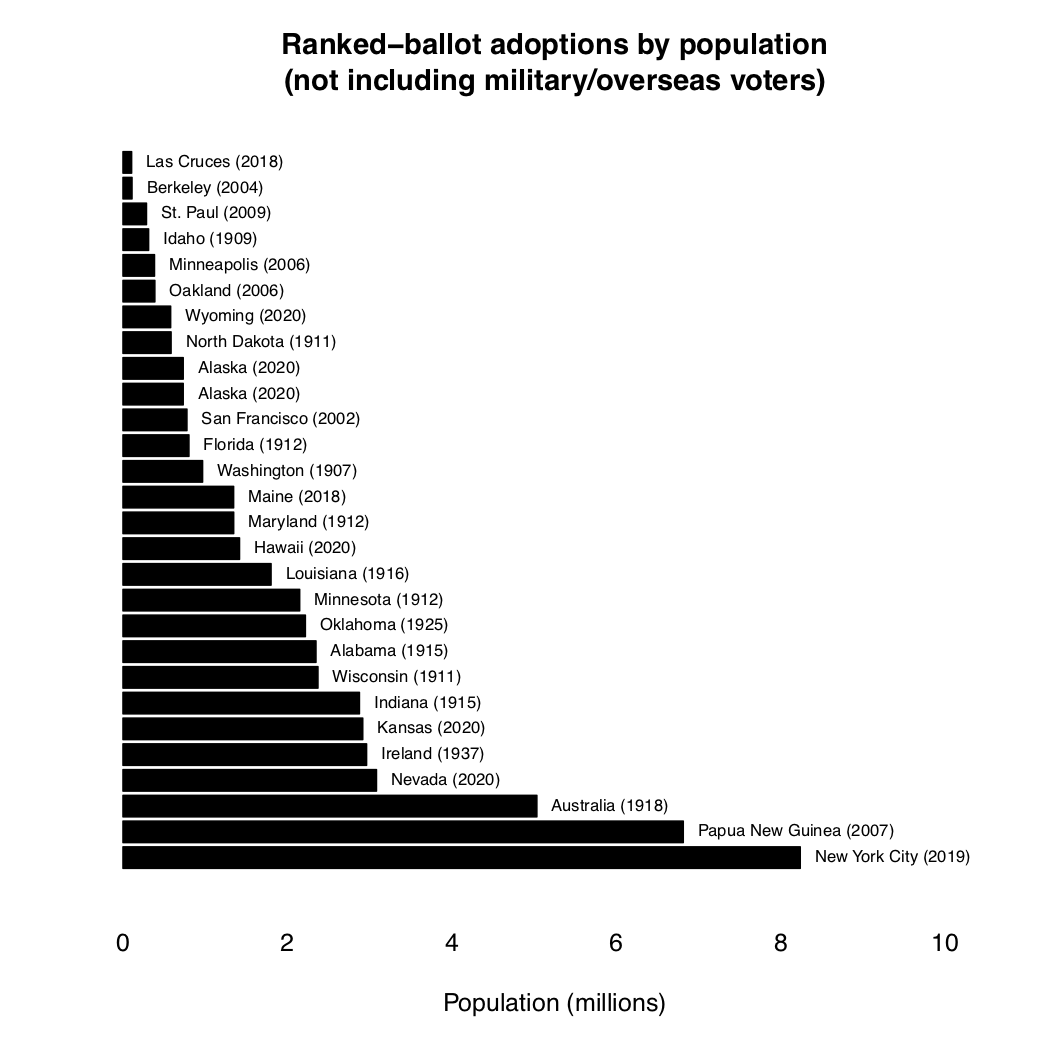This construct has long been a feature of Approval Voting advocacy. It refers to the possibility that two or more likeminded candidates in a plurality election appeal to the same group of voters, thereby dividing that group’s support.
Advocates of Approval Voting (and derivative rules) naturally gravitate to this construct. It is intuitive. It seems like it happens often. And, on its face, it makes a great case for Approval Voting. Heck, you just vote for both candidates!
With the entry of “vote splitting” into high-profile RCV advocacy, it may be time to take a critical view.
Nagel has shown that, under Approval Voting, two candidates appealing to the same group of voters actually have an incentive to encourage vote-splitting. The reason is that each cares about winning.
I am told of similar results for the Alternative Vote (aka IRV/RCV).
What about vote-splitting where everyone thinks it happened? I am talking about prominent presidential elections with minor-party candidates. Two recent studies suggest relatively little vote-splitting in practice: one on Libertarians, then a second on Stein/Greens and Johnson/Libertarians alike.
To find that third-party voters don’t break reliably in either direction is not surprising. Typically, such candidacies reflect the activation of some alternative issue dimension (e.g., climate).
That issue may even be so important (to third-party voters) that they refuse to rank (or approve/score) putative lower choices. Hence the Australian solution: compulsory ranking.
My personal view is that “vote splitting” has become an indulgent kludge. The obvious solution to the purported problem is to unite behind a single candidate. But this just will not do for a certain kind of reformer (indulgent). And it is a kludge because the problem is not demonstrated (nay, demonstrable) empirically — at least without considerable data on the policy preferences of voters and candidates alike.
Yet we will continue to hear about “vote splitting” because, without it, the case for single-seat reform evaporates.
